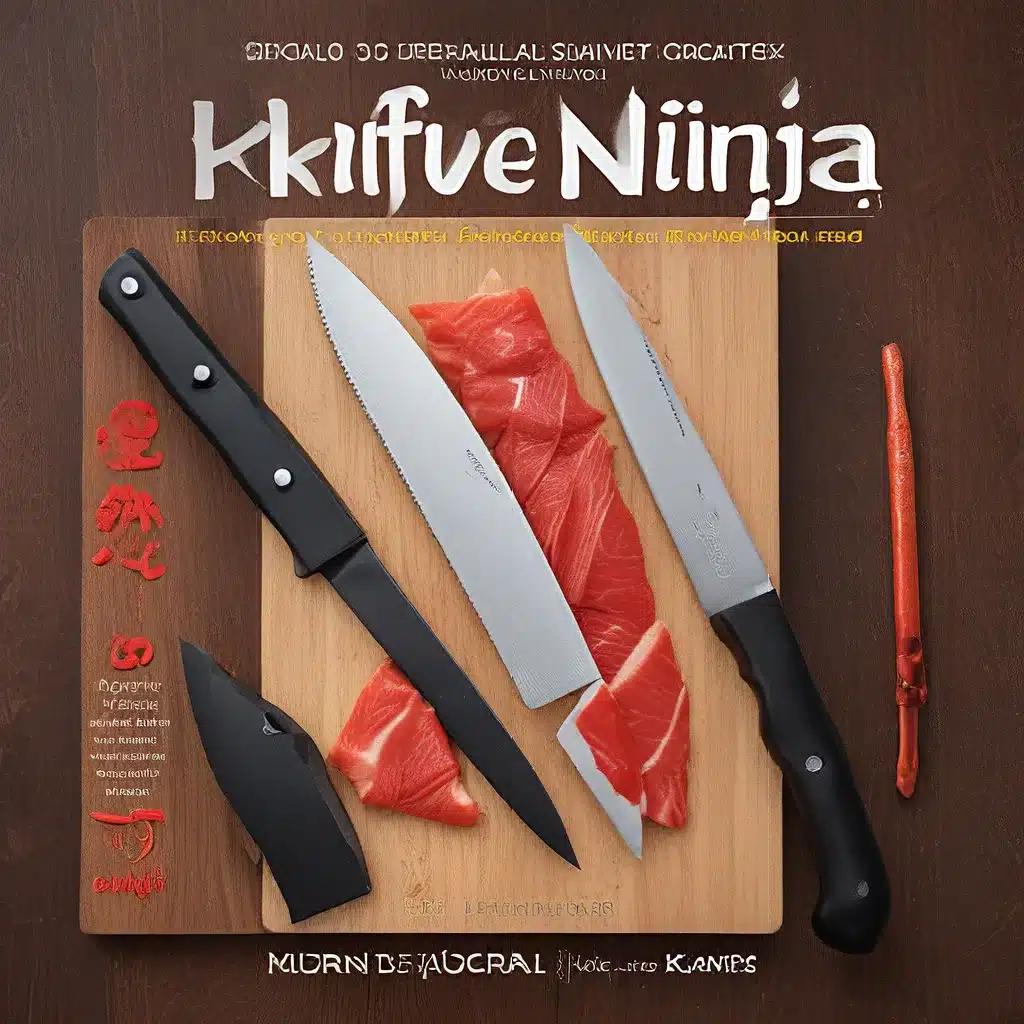
As a self-proclaimed cooking enthusiast, I’ve always believed that the right tools can make all the difference in the kitchen. And when it comes to food preparation, there’s no tool more essential than a sharp, high-quality knife. But let me tell you, sharpening your knife skills is no easy feat – it’s an art form that takes time, practice, and a deep understanding of the tools at your disposal.
That’s why I’m excited to share my journey with you today. I’ve spent countless hours honing my knife skills, from slicing and dicing to mincing and julienning, and I’m here to share my hard-earned wisdom. Whether you’re a seasoned chef or a complete beginner, this article is your ultimate guide to becoming a knife ninja.
Mastering the Fundamentals: The Anatomy of a Knife
Before we dive into the nitty-gritty of knife skills, it’s important to understand the basic anatomy of a knife. After all, how can you truly wield a tool if you don’t know how it works?
Let’s start with the blade. This is the business end of the knife, and the part that does the actual cutting. The blade can come in a variety of shapes and sizes, each with its own unique purpose. A chef’s knife, for example, is a versatile all-purpose blade that’s great for slicing, dicing, and chopping, while a paring knife is perfect for delicate tasks like peeling and trimming.
Next, we have the handle. This is where you’ll grip the knife, and it’s important that it feels comfortable and secure in your hand. Look for a handle that’s well-balanced and offers a good grip, whether it’s made of wood, metal, or a synthetic material.
Finally, there’s the bolster, which is the thick part of the blade where it meets the handle. This is an important safety feature, as it helps prevent your fingers from slipping onto the blade.
Now that you know the basic anatomy of a knife, let’s dive into the real meat of the matter: how to use it like a pro.
Knife Ninja 101: Mastering the Fundamentals
The first and most important step in becoming a knife ninja is learning the proper grip. This is the foundation upon which all your knife skills will be built, so it’s crucial to get it right.
The pinch grip is the most common and effective way to hold a knife. Simply place your thumb and forefinger on either side of the blade, just above the bolster, and wrap your remaining fingers around the handle. This gives you maximum control and stability, allowing you to make precise, clean cuts.
Once you’ve got your grip down, it’s time to start practicing your cutting techniques. The three basic cuts you should master are the chop, the slice, and the mince.
The chop is a powerful, downward motion that’s great for breaking down larger ingredients like onions or carrots. The slice is a smooth, lateral movement that’s perfect for thin, even cuts, while the mince is a quick, back-and-forth motion that’s ideal for creating small, uniform pieces.
As you practice these techniques, be sure to keep your fingers curled inward and your knuckles close to the blade. This will help you maintain control and avoid any nasty accidents.
But knife skills aren’t just about the cuts – it’s also about proper technique. Always keep your knife sharp and use a honing steel to maintain that edge. And when it comes to speed, slow and steady is the name of the game. Rushing through your cuts will only lead to uneven, messy results.
Beyond the Basics: Advanced Knife Ninja Techniques
Now that you’ve mastered the fundamentals, it’s time to take your knife skills to the next level. Here are a few advanced techniques to add to your arsenal:
Julienne: This technique involves cutting ingredients into thin, matchstick-like strips. It’s perfect for adding a pop of color and texture to your dishes.
Brunoise: This is the art of cutting ingredients into tiny, uniform cubes. It’s a great way to add a delicate, elegant touch to your cooking.
Chiffonade: This is a fancy way of saying “shredded” – it’s the process of stacking and rolling leafy greens like basil or spinach, then slicing them into thin ribbons.
Rocking: This is a technique that involves rocking the knife back and forth to create a smooth, even cut. It’s great for slicing through soft ingredients like tomatoes or avocados.
As you master these advanced techniques, don’t forget to practice, practice, practice. The more you use your knife, the more comfortable and confident you’ll become. And with time and dedication, you’ll be on your way to becoming a true knife ninja.
Putting Your Skills to the Test: Cooking with Confidence
Now that you’ve honed your knife skills, it’s time to put them to the test in the kitchen. The Herman Knives website offers a wide range of high-quality knives that are perfect for any cooking task, from slicing sashimi to dicing onions.
As you start to incorporate your newfound knife skills into your cooking, remember to have fun and experiment. Try out new recipes, explore different ingredients, and don’t be afraid to make mistakes. After all, the more you cook, the more confident you’ll become.
And who knows – with enough practice, you might just become the knife ninja of your own kitchen. So sharpen your blades, hone your skills, and get ready to take your cooking to new heights!


